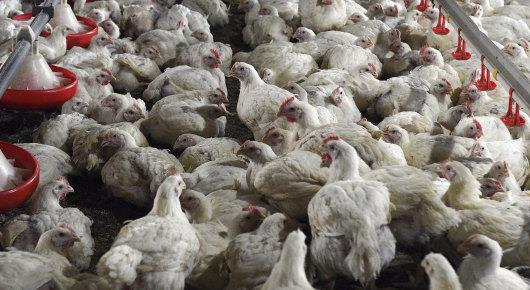In Berlin, FAO and partners call for reduced use of antimicrobial drugs

People take medicines to cure infections or diseases caused by microorganisms. But what happens when the disease-causing germs don’t react, because they’ve become resistant to that drug?
Shepherded by the United Nations Food and Agriculture Organization (FAO), a group of animal health experts discussed the issue today in Berlin, in the framework of an expert panel of the Global Forum for Food and Agriculture (GFFA) 2018.
When bacteria, fungi, viruses or parasites evolve and become resistant to antimicrobial substances, such as antibiotics, this is called antimicrobial resistance, or AMR. It is not a remote, dystopian scenario, but a very real phenomenon already affecting humans, animals, and even plants on all continents. It is also a threat to food security. For these reasons FAO and partners are scaling up efforts to reign in the spread of antimicrobial resistance.
Today’s panel discussion – a joint event with the German NGO Bread for the World – attracted a wide audience: technical experts, representatives of government and civil society, and the general public.
“Antimicrobials are critical for agriculture and have enabled us to improve animal health and welfare. But the sector is also guilty of overusing this valuable resource,” said Raimund Jehle, FAO Regional Programme Leader in opening the event. “Agriculture is now one of the contributors to the problem, but it is also part of the solution.”
“Agriculture is now one of the contributors to the problem, but it is also part of the solution.”
Raimund Jehle
FAO Regional Programme Leader
for Europe and Central Asia
“Addressing AMR needs to be streamlined into our efforts to develop sustainable livestock systems, considering that the demand for animal-sourced foods is likely to rise,” Jehle added.
Use of antimicrobials in the agriculture sector worldwide is difficult to estimate due to lack of regulations and poor data collection in many countries. However, an estimated 60,000 tonnes of the drugs are used every year. Over time, they have become less effective or even useless, leading to reduced ability to control infections in humans and animals.
"Reducing the need for antimicrobials – by improving sanitation and biosecurity as well as animal nutrition – are key to reducing the risk of infections in the first place,” said Sarah Cahill, FAO food safety officer and a member of the panel. "This requires investment in agriculture to enable farmers to make the changes necessary, so that antimicrobial use will no longer be an attractive option for healthy and productive livestock."
Non-therapeutic uses of antimicrobials – for example as growth-promoters – should be minimized, according to FAO.
Antimicrobial resistance is also a real concern from the food safety perspective. The Codex Alimentarius Commission is tackling the issue all along the value chain – from food production to consumption.
Other speakers today included Marc Sprenger (WHO), Matthew Stone (OIE), Viviana Munoz (South Centre), Amit Khurana (Centre for Science and Environment), and Reinhild Benning (Germanwatch), with Stig Tanzmann from Bread for the World as moderator.
“Everything depends on antibiotics,” said Sprenger, emphasizing that agriculture has a direct effect on human health.
OIE’s Matthew Stone called the capacity of veterinary services a big challenge. To improve this and educate veterinarians, his Organization has an international programme of focal point trainers.
International recommendations are available, said Amit Khurana, such as those generated collaboratively by FAO, OIE and WHO. Still, “one needs a different mindset to see what fits in (a given) country.”
Viviana Munoz referred to the specific situation of developing countries who have to face a “double challenge” – dealing with a gap in access to antimicrobials and using them in moderation at the same time.
Civil society has a role to play, too, and should not leave the private sector to solve the problem along, according to Reinhild Benning of Germanwatch. Eating less meat, especially antibiotic-free meat, is one example of what consumers can do, she said.
Due to its complex and cross-sectoral nature, the problem of antimicrobial resistance requires a collective and practical response, the experts agreed. Data collection and statistics, surveillance options, and dissemination of proven practices on the prudent use of antimicrobials are important aspects. Consumer action is another angle, as people increasingly voice their concerns and make choices that will influence policy makers and producers.
A Global Action Plan to guide countries on putting in place national action plans on antimicrobial resistance was endorsed by WHO, FAO and the World Organisation for Animal Health (OIE) in 2015.
19 January 2018, Berlin, Germany
